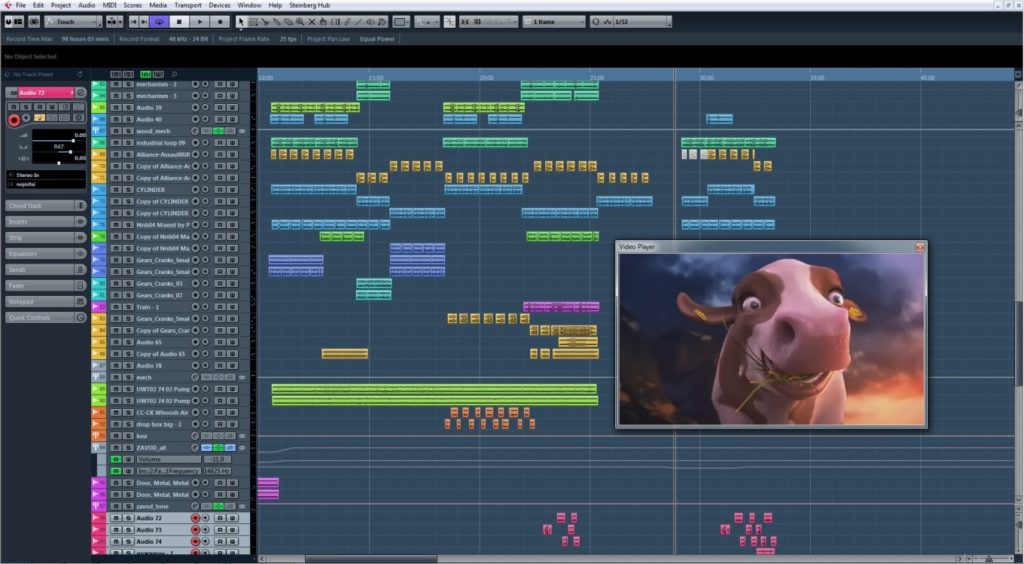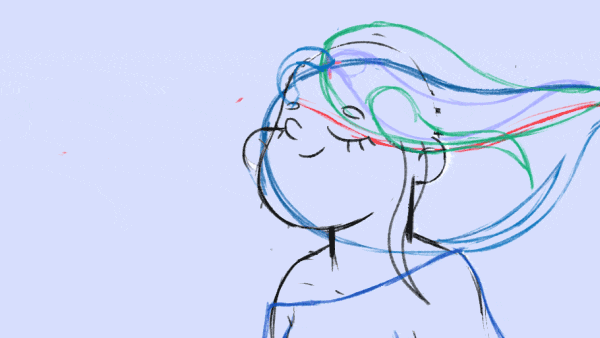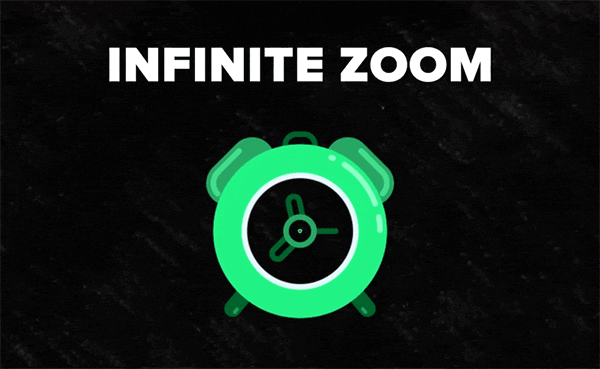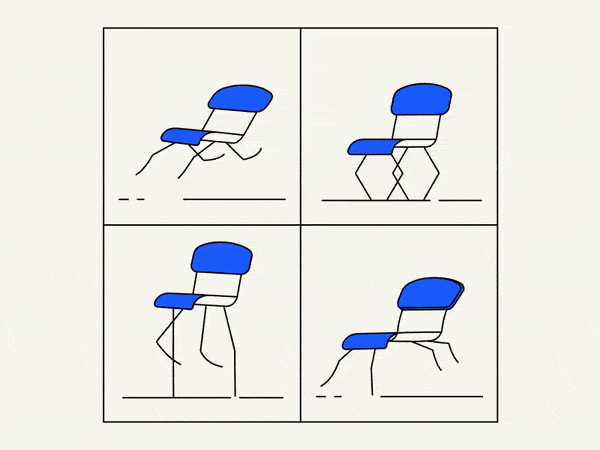Whether you work in 2D or 3D, sound design can make your projects way more engaging. It helps to bring to life the characters and worlds you create and communicate your message to the audience more effectively. We have interviewed Dmitry Novozhilov, the founder of Daruma Audio and the author of Sound Design Fundamentals and Sound Design for Animation courses, so that you can find out more about the power of sound design and the doors it opens for you.
— Let’s start with the most obvious question. What is sound design? Is it the same as composing music?
— Well, it’s not the same. A number of sound designers compose music as well, but the tasks of a composer and those of a sound designer are very different. Sound design is a pretty big concept. It combines several directions of work at once. One of them is creating ambience. It helps to understand what surrounds you and helps to immerse into space: in the forest, we can always hear leaves rustling and birds singing, while in the city there are the traffic noise and people’s voices.
The second direction is the Foley effects. In films we can hear footsteps, clothes rustling, doors slamming. But in fact, these sounds aren’t recorded on the site — a sound designer works on them.
Third, are the sound effects that can’t be recorded in reality. For example, the noise of a spaceship or the voice of the robot Wall-e. Any sound that we can’t come across in nature is created from scratch.
We tried to show how to work with each of these directions in our courses, so that the students get a good idea of all the immense potential of sound design.

Check our Sound Design for Animation course.
— So, can a person who has already worked with sound just learn some nuances? Will it be enough?
— It can be enough. But sound design requires a sense of taste and well-developed association skills. Sound design means creating the whole project out of numerous separate sounds. Out of the sounds created by a car engine or by opening a fridge, you can design something new and apply it to a completely different image. And that’s what makes it interesting. That’s why you should always learn how to create the right associations.
— Is it right to say that sound design isn’t about sound as such but about the skill to see subtle links between things?
— Yes, that’s right. Actually, the sound is just a technique that can be gained with experience — just work, work, work, learn basic things. However, taste and the skill to choose a sound to match a specific image are just something either you’ve got or not.
— No hope for those who don’t have taste? Is it some kind of innate ability?
— It can be acquired. When you start working in a new sphere, you begin by learning from the best. You find a person you look up to professionally and explore what they like, how they work. In the course of studying such examples, your own taste is being developed.
— Who has inspired you? Whose works did you use as a reference?
— I surfed the Internet and watched Vimeo where lots of animation studios and motion designers share their works. I paid attention to the artists who were creating sound for those works. So, I selected a couple of studios and sound designers to follow and just tried to do it like they did.
— Let’s talk about your workflow. So to speak, you get an order, discuss all the details with a client. What’s next? What do you begin your work with?
— Our specialization is sound design for explainer videos about startups and their products. I like this sphere because it’s developing very quickly, and I can create the sound for their projects in a few days.
After we get an order, we start working on sound straight away. All the references, which can be applied to the project, are already in our minds. We know exactly which sound will be suitable for each case. So, we either record it ourselves or take it from our library. It doesn’t take much time, we can complete a project in one or two days.
— That sounds impressive. But not all our students have huge libraries at hand and your level of experience. Any advice for beginners on where to start?
— If you want to master this profession, you need to begin with collecting a library of sounds. So that you’ll have plenty to choose from while working on a video. The sound of a door slamming, for instance, can be recorded with a microphone without leaving your home, but in case of a lion roaring it’s way more difficult.
For such cases, there’re special resources. My personal library took a very long time to be formed: I’ve recorded some sounds myself and searched for other freely available or bought the once I liked. Moreover, I’ve constantly studied popular branded videos in order to understand how they have been made. It was difficult at first for me, as interesting ideas would come to my mind, but I didn’t enough skills to bring them to life. It can be frustrating, as you can imagine. Over time, my library and my skills have grown, so now almost no difficulties arise.
— How difficult is it to match a proper sound to a moving picture?
— When you see an image on the screen, you almost immediately get to understand how it should sound. All you have to do is to find suitable sounds in the library or record them. Once we’ve made a video for Pornhub about lazy pandas which don’t want to breed. It was necessary to figure out how their steps would sound. As a result, we had inflated a balloon, then we were hitting it and squeezing it in every way. After that, we’ve selected and mixed together fragments of these records in order to get a cool result.
— Have you ever been in the situation when you couldn’t find the right sound?
— If I turn to my imagination, I always manage to choose the right one. Anyway, you can create a sound by means of anything at hand. For example, you can make a sound for submarine propellers by pressing a toilet flush button and then decreasing the recorded sound by a few tones. The rain, for example, reminds of the sound of frying bacon. By hitting the table with a coconut half, you can reproduce horse hooves clattering the ground. It’s always possible to find the right sound. The question is if you’ll manage to get an unusual idea that will be interesting both to your client and your audience.
When we work on sound, we usually use a few layers at once to get a texture, which won’t violate a copyright. This way we’ve created Roshan’s roaring for the famous Dota 2 video game. First, we shouted at the microphone through a ballon, and then we lowered the recorded sound by a few tones to make it more weary. Then we mixed the roar of a bear and a lion into the sound. Finally, we added synthesizer sounds. As a result, we’ve got an interesting, unique element of the character’s image.
— There’s something every aspiring sound designer wants to know: how do you find clients?
— When I just started, I sent out letters offering to collaborate or make sound design. Basically, I was engaged in trivial emailing. Now clients come by themselves — they find us on Vimeo, they come upon their friends’ recommendations. In most cases, we simply take assignments, rather than spend time looking for new clients.
It comes with experience.
— Are there any principles that you are guided by in your work?
— I always to the team that everything must be done at high quality. It sounds corny, but we’re trying to do cool stuff and to grow from project to project. Second, we always meet deadlines. Third, we position ourselves as a team inside the team of our client. When coming to us, a client kind of includes us in their team. We get used to it, adapt to timelines and feel comfortable.
— What equipment do sound designers usually use?
— It’s extremely important for a sound designer to be resilient. My work set includes a laptop, a recorder, a sound card and headphones — all this is quite compact. It’s enough for work. When working in a studio, you can use more powerful computers, enhanced sound cards and mikes. So that you can record material of a higher quality.

— Is this set enough for a newbie?
— Absolutely.
The thing that I have always been curious about is how much software can help to get a better sound from the hardware. Can software turn a low-quality sound into a high-quality one?
I’ll give you an example. There’s a Zoom h4n recorder with the preamps that make too much noise. When recording a detailed sound texture, for example, the sound of scissors, the sound itself is weak and the preamps make a loud noise. As a result, we get not very clean sound, kind of a grainy sound. There’s iZotope RX program for the restoration of records. This program allows us to cut out the noise of the preamps and get a clean sound. I often use it to remove noises, clicks and other artifacts.
But if you record ambient sounds or some specific sound source, let’s say, on an iPhone, you’ll never make it strong. It’s already defective. It can’t be used as a complete sound, and software won’t be able to enhance its quality.
— And what about the software? What programs do you use in work?
— The main tool is Cubase. I also work with Reaper and iZotope RX.

— Now you run your own studio. How was Daruma Audio founded?
— To be honest, I’ve always dreamt of a large team. But the team needs to be motivated and maintained so that my ambitions have subsided over time.
It isn’t a physical studio. When I was engaged in sound engineering, I didn’t like that I was tied to the workplace. I’ve always wanted to work as designers who could carry out their orders anywhere, taking with them only a tablet or a laptop.
Sound design allows me to have a similar lifestyle: I can take only my headphones and a laptop to be able to work from anywhere in the world. All my employees work from home, or from whatever places they choose to because it’s really convenient: you can avoid wasting time on travelling to your work and choose any location that maximizes your efficiency.
— What does your workplace look like?
— On the desk, I have a laptop that I connect to a monitor, a pair of speakers, headphones, a sound card, a MIDI keyboard and a microphone in case I need to make a podcast. I also have a recorder that I use to record new sounds. All this is enough for me to work.
I have recently caught myself thinking that I buy too many gadgets, which I don’t use. It’s just something I can’t resist. I’m really impressed by people who don’t chase after new products and at the same time do the projects of no worse quality than those created with tons of equipment. Now I have decided to quit wasting money and try to achieve good results with what I have. Minimalism is really cool, so I’m aiming at this.
I often move objects in my improvised home studio, because I hate staying in the same space. I can move the sound card to another place or remove the keyboard to change my surroundings. For me it is almost the same as airing a room — it is easier to work and come up with something new in a different setting.
— Let’s try to take a look into the future. How will sound design evolve? How does sound design interact with trends like VR?
— We are already tightly engaged in creating sounds for virtual reality. We think it’s a promising sphere. Also, sound design will continue developing in videogames, filmmaking, and generally in all industries where sound is required. There are examples when shopping centers are voiced. The sphere is so wide that everyone can find a career for themselves.
We think of VR not just as of virtual reality for videogames and entertainment, we rely on video and advertising in a virtual reality format, 360-degree videos. It’s quite interesting, we will develop in this direction.
Want to know more about animation?
Breakdown of Frame-by-Frame Animation
In this short frame-by-frame animation tutorial, I’ll show you how to create and animate an illustration from scratch. We’ll start with a sketch and will go all the way up to post-production. To do this you’ll only need Photoshop for drawing and for frame-by-frame animation and After Effects to put it all together nicely and […]
Exponential scale in After Effects
How often you want to achieve the exponential scale. You’ve probably tried to do that with graph editor, but it’s almost impossible. In that case, we’ve prepared the two ways how to do it quickly. Right-click on selected keyframes, go to keyframe assistant, and choose an exponential scale. That’s it! Another way is to use […]
Running Chair Animation Breakdown in After Effects
New “How to” create a funny chair run cycle in After Effects. Step-by-Step Guide: Runnning Chair Animation The Running Chair Animation in After Effects is a creative and dynamic effect that can add visual interest and energy to your projects. It involves animating a chair to simulate movement as if it is running or sliding […]



